Triggering in ATLAS in Run 3
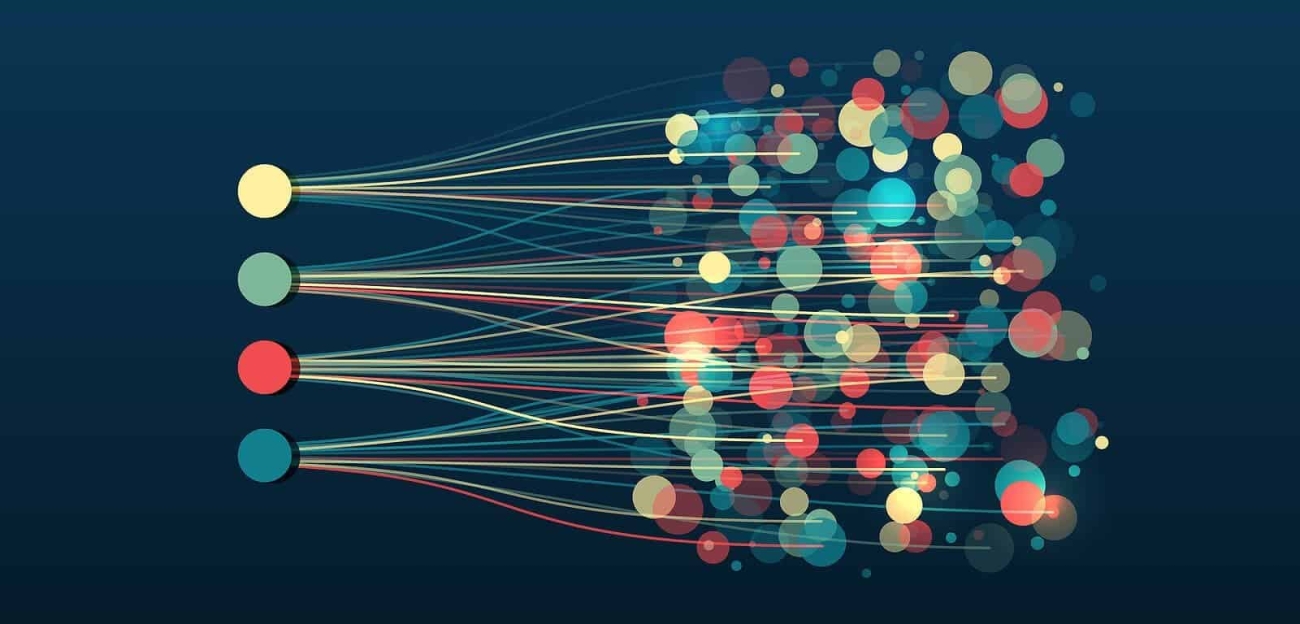
The ATLAS collaboration recently celebrated its 30th anniversary following the submission of the experiment’s Letter of Intent in 1992 and has accomplished great achievements during these years. However, it is still a young experiment, with only 6% of the total data set acquired to date.
During the LHC Long Shutdown 2 (LS2, 2019-2022), the ATLAS detector went through its first major update after its initial design, the Phase-I upgrade. One of the main focuses was on improving its real-time event selection for permanent storage, that is, the trigger system.
The ATLAS trigger system is of paramount importance since it is the first level of discrimination between signal and background, discarding around 9,999 out of every 10,000 events seen in the detector. It is formed of a hardware-based first level trigger (Level-1, L1) and a software-based high-level trigger (HLT). The Level-1 trigger uses custom electronics to determine regions of interest in the detector, taking as input coarse granularity information from the calorimeter and muon spectrometer systems and reducing the event rate from the LHC bunch crossing rate of 40 MHz down to 100 kHz. The HLT comprises 60,000 physical processing cores corresponding to 2.0M HS06 which are used to run sophisticated offline-like selection algorithms using full granularity detector information, this further reduces the event rate down to 3 kHz. Around 1,500 trigger selections are designed to cover a large variety of physics processes. To meet the rate/bandwidth/CPU constraints, the trigger selections are optimized to select the most interesting events out of the LHC collision data following the priorities of the ATLAS physics programme.
For LHC Run 3 (2022-2025), the ATLAS Trigger and Data Acquisition system (see Fig. 1) has undergone a major upgrade, with almost no part remaining untouched. This is a first step towards a full renewal, the Phase-II upgrade, which will increase the output rate yet further up to 1 MHz at L1 and 10 kHz at the HLT in order to cope with an unprecedented luminosity of 7.5 x 1034 cm-2s-1 (almost four times the current intensity) and a harsh environment of up to 200 collisions per bunch crossing (pileup) during the High-Luminosity LHC (HL-LHC) phase due to start in 2029.
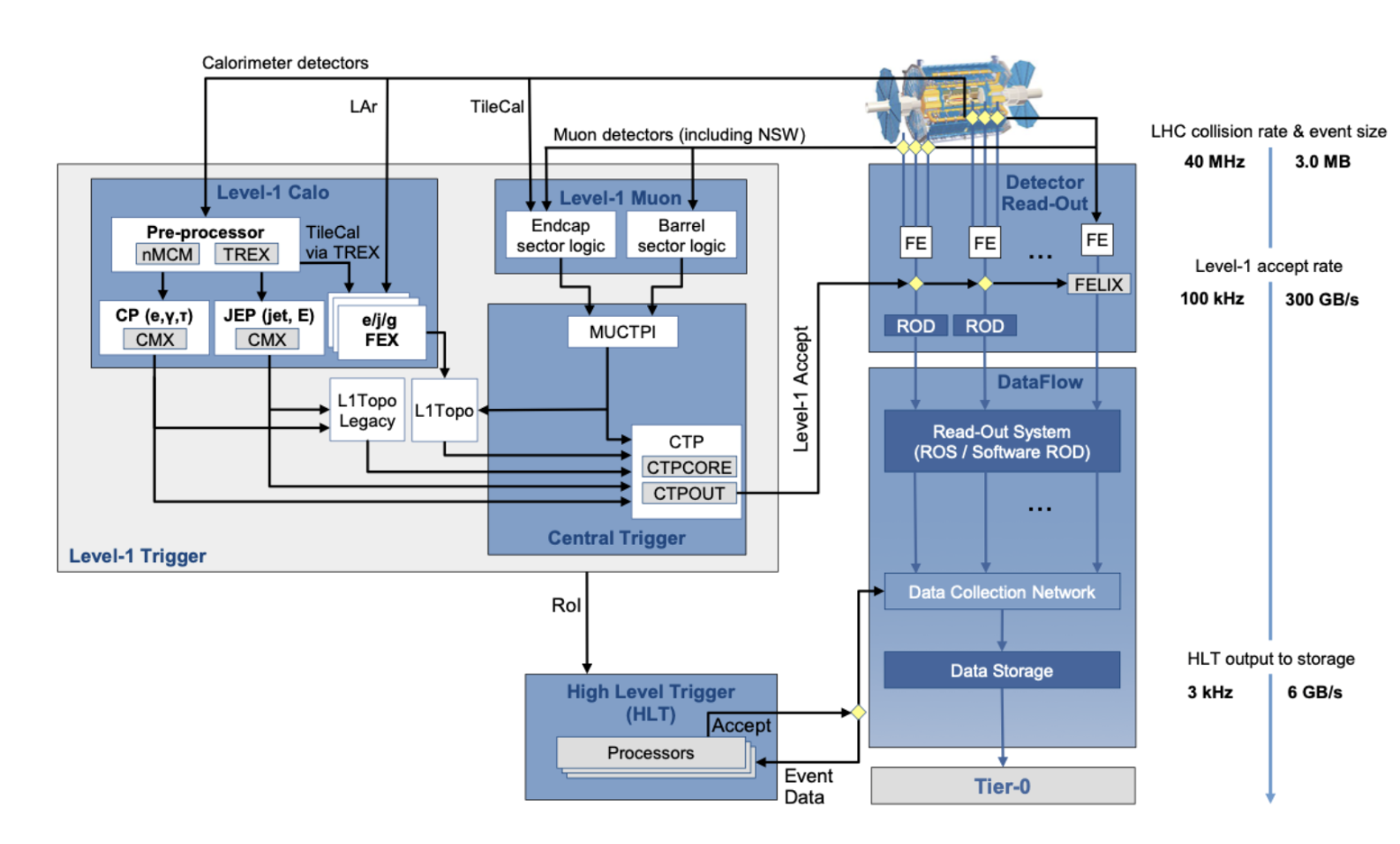
Fig. 1: Schematic layout of the ATLAS Trigger and Data Acquisition system in Run 3.
Hardware upgrade and commissioning
New hardware, as described in the ATLAS TDAQ system Phase-I upgrades TDR, has been designed, produced, tested and installed during LS2, incorporating new functionalities to increase the signal acceptance as well as to provide better early background rejection.
The Level-1 Calorimeter Trigger system is fully redesigned to exploit the higher granularity provided by the Liquid Argon (LAr) calorimeter, where a single analogue energy deposit unit known as a trigger tower in Run 2 (which corresponded to 60 calorimeter cells) is now split into 10 digital “supercells” during Run 3. In addition, a new Tile Rear Extension (TREX) digitizes the analogue signals from the hadronic Tile Calorimeter, resulting in a fully digital input.
The core of the upgraded Level-1 Calorimeter system is composed of three Feature Extractor processors used to reconstruct electromagnetic (eFEX), jet (jFEX) and global (gFEX) objects. Custom electronic boards have been equipped with FPGA technology to enhance the signal-to- background ratio by making use of more complex and refined algorithms.
Both the Run 2 legacy and Run 3 Phase-I Level-1 Calorimeter systems have been operating in parallel during the commissioning phase to support ATLAS physics from the first day of Run 3. A staggered activation and transition strategy was defined to meet the commissioning needs of the new hardware while respecting the limitations of the DAQ systems.
The single lepton primary triggers, e.g. triggers requiring at least one low transverse momentum electron or muon in the final state, are used by more than 50% of the ATLAS physics analyses. These are not only essential for precision electroweak physics, such as the W mass measurement, but also serve various other analyses, including searches for new physics. In the legacy system, the L1_EM22VHI trigger (requiring an isolated electromagnetic cluster with the hardware transverse energy threshold set to a value of 22 GeV) was largely affected by QCD multijet background and therefore emerged as the single highest rate trigger item, with a rate of 32 kHz at the peak luminosity of 2x1034 cm-2s-1. In the Phase-I system, the L1_eEM26M trigger based on the new eFEX processor has a much sharper efficiency turn-on curve while reducing the rate 6 kHz. This was achieved by applying targeted jet discriminant cuts which make use of the increased supercell granularity, as shown in Fig. 2. In May 2023, the Level-1 EM legacy trigger was disabled and the Level-1 eFEX triggers became the default.
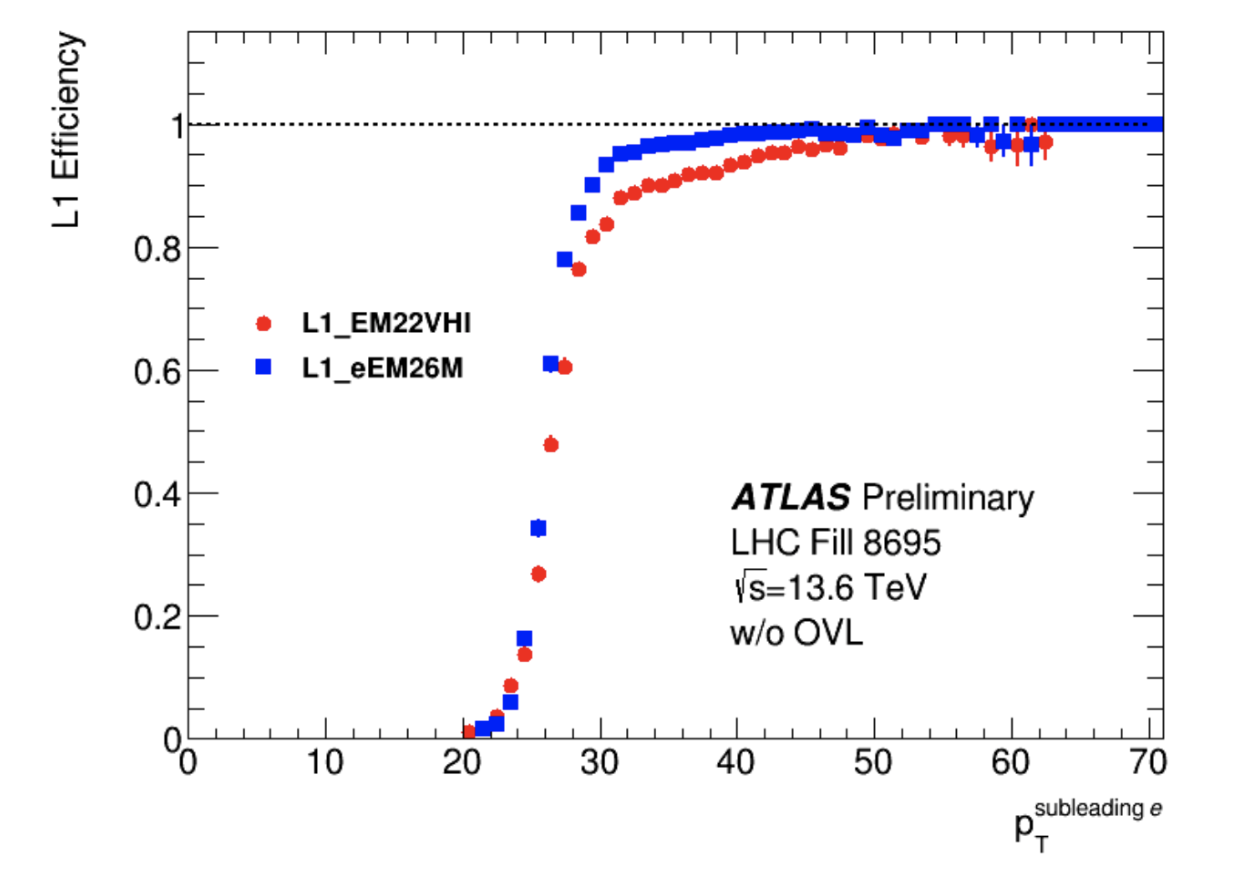
Fig. 2: Efficiency of the primary Level-1 electromagnetic (EM) trigger for the legacy (L1_EM22VHI) and Phase-I (L1_eEM26M) systems as a function of the reconstructed electron pT. Evaluated using a tag-and-probe methodology on Z-candidate events.
The Level-1 Muon Trigger system makes use of Resistive Plate Chambers (RPC) for the barrel (|𝜂| < 1.05) and Thin Gap Chambers (TGC) for the endcap (1.05 < |𝜂| < 2.4) regions. The New Small Wheel (NSW), formed by micromegas and small-strip TGCs, is a brand-new detector and a key milestone for the ATLAS Phase-I upgrades. The Phase-I upgrades also include new Barrel and Endcap Sector Logics and a new Muon-to-Central Trigger Processor Interface (MUCTPI), described elsewhere in this issue of the EP newsletter.
Fake muons at the trigger level arise mainly due to slow charged particles originating outside the interaction point. The spurious triggers originating from these fake muon signatures are now suppressed in the muon endcap trigger by requiring a coincidence between hits from the innermost and outermost muon chambers with either the outermost layer of the hadronic Tile Calorimeter (1.05 < |𝜂| < 1.3) or with the NSW (sTGC-Pad only, 1.3 < |𝜂| < 1.9). This new inner-coincidence logic was enabled in July 2023, reducing the rate of L1_MU14 (trigger requiring a muon candidate to pass the 14 GeV pT threshold) by approximately 8 kHz at the luminosity of 2 x 1034 cm-2s-1, as shown in Fig. 3. The activation of this inner-coincidence veto resulted in an efficiency loss of only 4%.
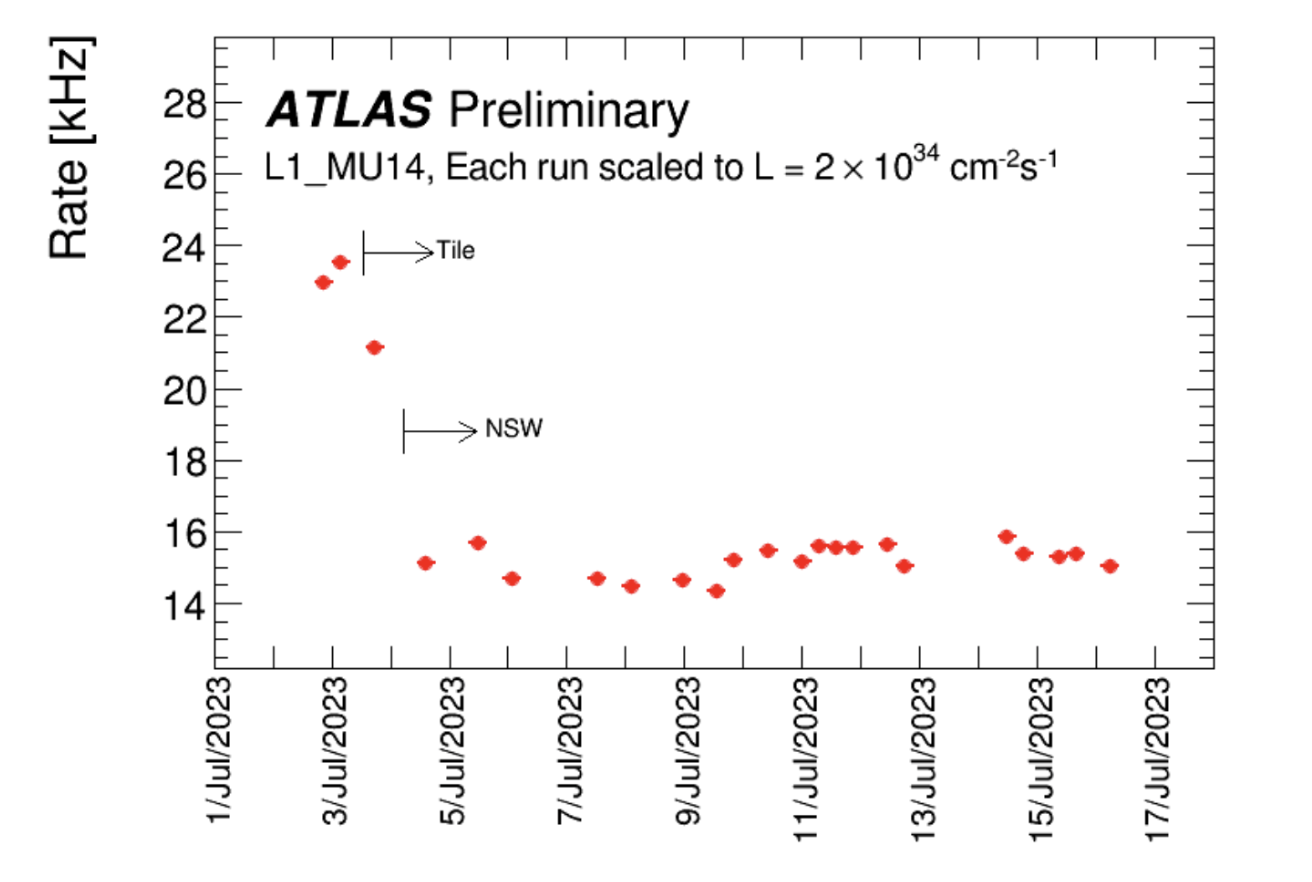
Fig. 3: Rate of the primary Level-1 muon trigger with a transverse momentum threshold of 14 GeV (L1_MU14), at the luminosity of 2×1034 cm-2s-1, as a function of time in 2023.
The Level-1 Topological Trigger (L1Topo), a new processor deployed in Run 2, has been redesigned for Run 3. The L1Topo system applies topological selections at Level-1 by combining kinematic information from multiple calorimeter and muon trigger objects, such as requiring a certain angular separation or applying invariant mass requirements. Three custom ATCA boards equipped with two processors FPGAs each have been deployed for Run 3, with one board providing multiplicity triggers (one 26 GeV electron, two 20 GeV electrons, etc.) for calorimeter objects and the other two boards running different topological selections. The use of L1Topo significantly suppresses backgrounds for many trigger selections, often by more than a factor of two. This allows for the preservation of sensitivity for channels such as H → 𝜏𝜏 and Bs → 𝜇𝜇, as seen in Fig. 4. The Phase-I L1Topo muon-based triggers were enabled at the beginning of 2023.
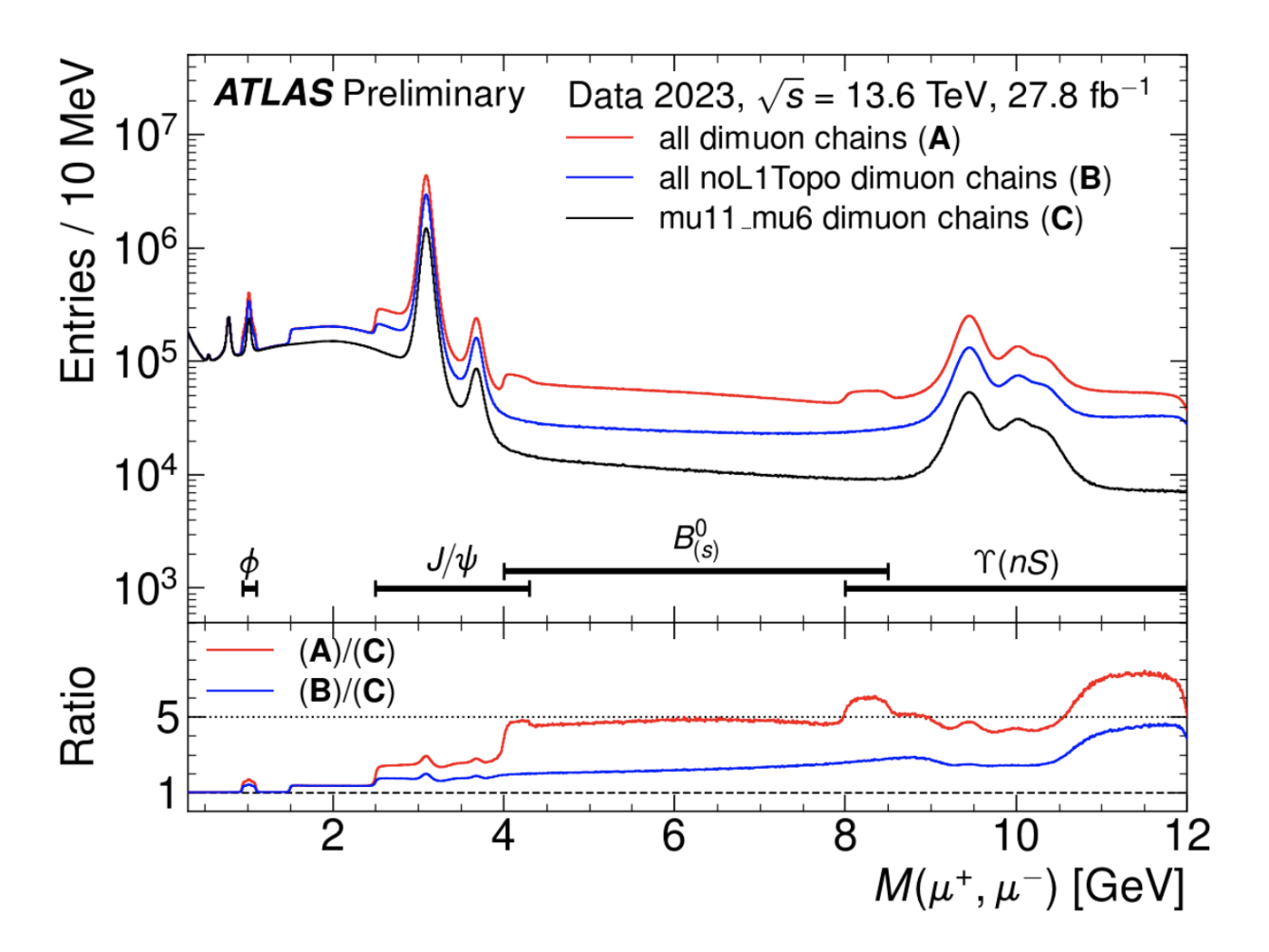
Fig. 4: Invariant mass distribution for oppositely charged muon candidate pairs that pass both standard and L1Topo triggers using 2023 data. The red line shows the increase in statistics for quarkonia candidates achieved from the topological selection being applied at L1.
Software upgrade and commissioning
The ATLAS offline and trigger software suite has been migrated for Run 3 to a new multithreaded framework, AthenaMT. The HLT software framework has been completely redesigned in order to support multi-threading and to allow for even closer integration of the sophisticated algorithms used to reconstruct physics objects for analysis. Multithreaded operation leads to a large reduction in the usage of memory resources, as shown in Fig. 5. The trigger is currently using 2 threads per worker process for data, and typically 8 for simulation.
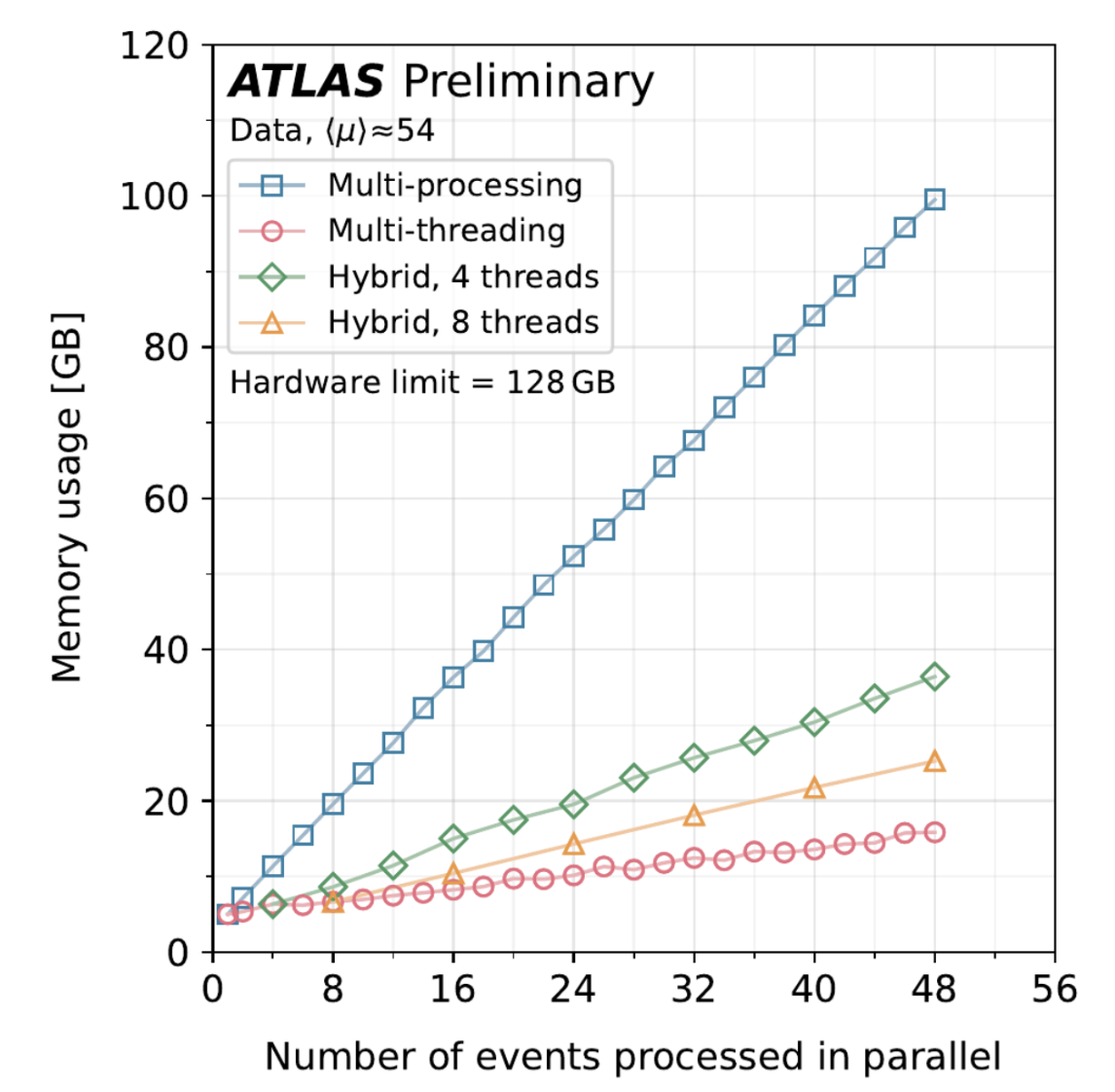
Fig. 5: Memory usage as a function of the number of events processed in parallel for the HLT selection algorithms.
In addition, the ATLAS Run 3 trigger has been equipped with the most innovative and consolidated offline reconstruction techniques to maximize the physics output. The implementation of a full scan of the detector for tracking (in addition to regional tracking as used in Run 2) opens new opportunities for hadronic signatures. The new generation of hadronic triggers includes particle flow for jet reconstruction, b-tagging migration from MV2 to DL1 in 2022 and GN1 in 2023, and track-based missing transverse energy algorithms.
Moreover, after more than a decade of the Higgs boson discovery, searches for Higgs boson pair production are increasingly important as the most promising way to probe its self-coupling. The trigger has been optimized accordingly, increasing the HH → bbbb signal efficiency by 80% and increasing the rate of recorded bbbb final states in a newly created delayed stream.
To access new regions of the phase space and potential new exotic signatures, Trigger Level Analysis (TLA) which emerged as a novel idea to circumvent the bandwidth limitations, has been expanded from jet signatures for low-mass resonance searches in Run 2 to many other physics objects in Run 3, such as initial state radiation photons.
In summary, the ATLAS trigger system has been successfully commissioned in the start-up phase of Run 3 with early 13.6 TeV collision data, with many new upgrades currently in operation for the benefit of the physics potential of the experiment and its upcoming new discoveries.
